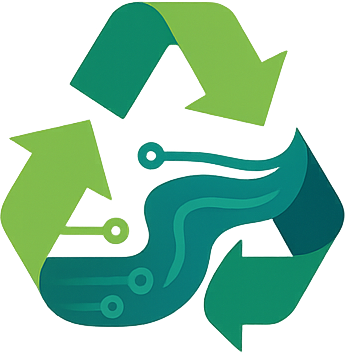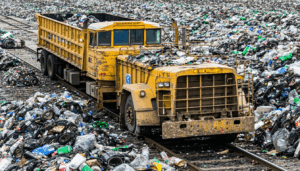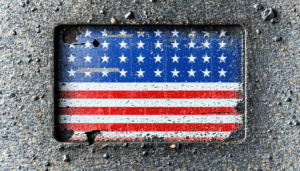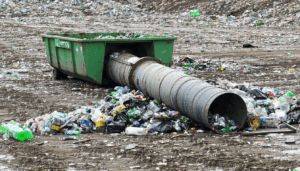Introduction
Every year, millions of American households generate hazardous waste, from old paint cans to expired medications, posing risks to health and the environment if not handled properly. With growing awareness of these dangers, recent initiatives and regulations across the United States are making household hazardous waste disposal safer and more accessible. This article explores the latest developments in disposal programs, their impact on communities, and what residents can do to contribute. From new collection events to updated guidelines, here’s how the nation is tackling this pressing issue.
The Growing Challenge of Household Hazardous Waste
Household hazardous waste includes everyday items like batteries, cleaning chemicals, pesticides, and electronics that can harm the environment or human health if discarded improperly. According to the Environmental Protection Agency (EPA), Americans generate over 1.6 million tons of such waste annually. Improper disposal—often through regular trash or down drains—can contaminate soil, water, and air, creating long-term ecological damage.
The significance of this issue has prompted local and federal authorities to act. Many communities now face stricter regulations on waste management, while public education campaigns aim to inform residents about safe practices. The challenge lies in balancing convenience for households with the need for environmentally sound solutions.
Key Developments in Household Hazardous Waste Disposal
In 2023, several states and municipalities have rolled out innovative programs to address this concern. For instance, California expanded its Household Hazardous Waste Collection Program, hosting over 500 drop-off events statewide. These events allow residents to dispose of items like motor oil and fluorescent bulbs at no cost, reducing illegal dumping.
Meanwhile, the EPA launched a national campaign in September 2023 to promote proper e-waste recycling. With electronics contributing significantly to hazardous waste, the initiative partners with retailers to offer free recycling drop-off points. “Safe disposal is a shared responsibility,” said EPA spokesperson Laura Bennett. “We’re working to make it easier for everyone to play their part.”
Impact on Communities and Stakeholders
These efforts have tangible benefits for both residents and local governments. Safe disposal programs prevent toxic leaks into landfills, protecting groundwater supplies that millions rely on. For communities, fewer incidents of illegal dumping mean cleaner public spaces and lower cleanup costs.
However, challenges remain. Small towns often lack the funding for regular collection events, leaving rural residents with limited options. According to Dr. Emily Carter, an environmental scientist at the University of Michigan, “Access to disposal facilities is still uneven. We need federal support to bridge these gaps and ensure equity in waste management.”
Businesses also feel the impact. Retailers participating in take-back programs report increased foot traffic, but some express concerns about operational costs. A balanced approach is needed to sustain these partnerships without burdening small enterprises.
Steps for Safe Disposal: What You Can Do
For households looking to dispose of hazardous materials responsibly, several options are available across the US. Here are practical steps to follow:
– Check Local Programs: Visit your city or county website to find nearby drop-off locations or scheduled collection days.
– Use Retail Take-Back Options: Many stores, like Home Depot or Best Buy, accept specific items such as batteries or electronics.
– Store Safely Until Disposal: Keep hazardous items in original containers, away from children or pets, until you can dispose of them properly.
– Avoid Mixing Waste: Combining chemicals can create dangerous reactions, so separate items during storage and transport.
Future Outlook and Potential Implications
Looking ahead, experts predict that household hazardous waste disposal will remain a priority as urbanization increases waste generation. Innovations like mobile collection units and digital tracking systems for drop-off points could streamline processes further. Additionally, proposed federal legislation in 2024 aims to allocate more funding for state-level programs, potentially leveling the playing field for underserved areas.
On the flip side, some stakeholders worry about overregulation stifling small businesses involved in waste management. Others argue that without stricter rules, progress will stall. Striking a balance between enforcement and accessibility will be key to long-term success.
Conclusion
Household hazardous waste disposal is a critical issue that affects every American community, from urban centers to rural towns. Recent initiatives, like expanded collection events and national campaigns, show promise in mitigating environmental risks while educating the public. As individuals, taking small steps to dispose of waste responsibly can make a big difference. With continued collaboration between governments, businesses, and citizens, the US is on track to build a safer, cleaner future.
Frequently Asked Questions (FAQ)
1. What qualifies as household hazardous waste?
Items like paint, solvents, pesticides, batteries, electronics, and medications are considered hazardous due to their potential to harm health or the environment.
2. Where can I dispose of hazardous waste in the US?
Most cities offer drop-off locations or periodic collection events. Check your local government website or the EPA’s resource page for nearby options.
3. Is there a cost for household hazardous waste disposal?
Many programs are free, though some may charge small fees depending on the item or location. Always confirm with your local facility.
4. Why can’t I throw hazardous waste in regular trash?
These materials can leak toxins into landfills, contaminating soil and water. Proper disposal prevents environmental damage and protects public health.





